Puffins
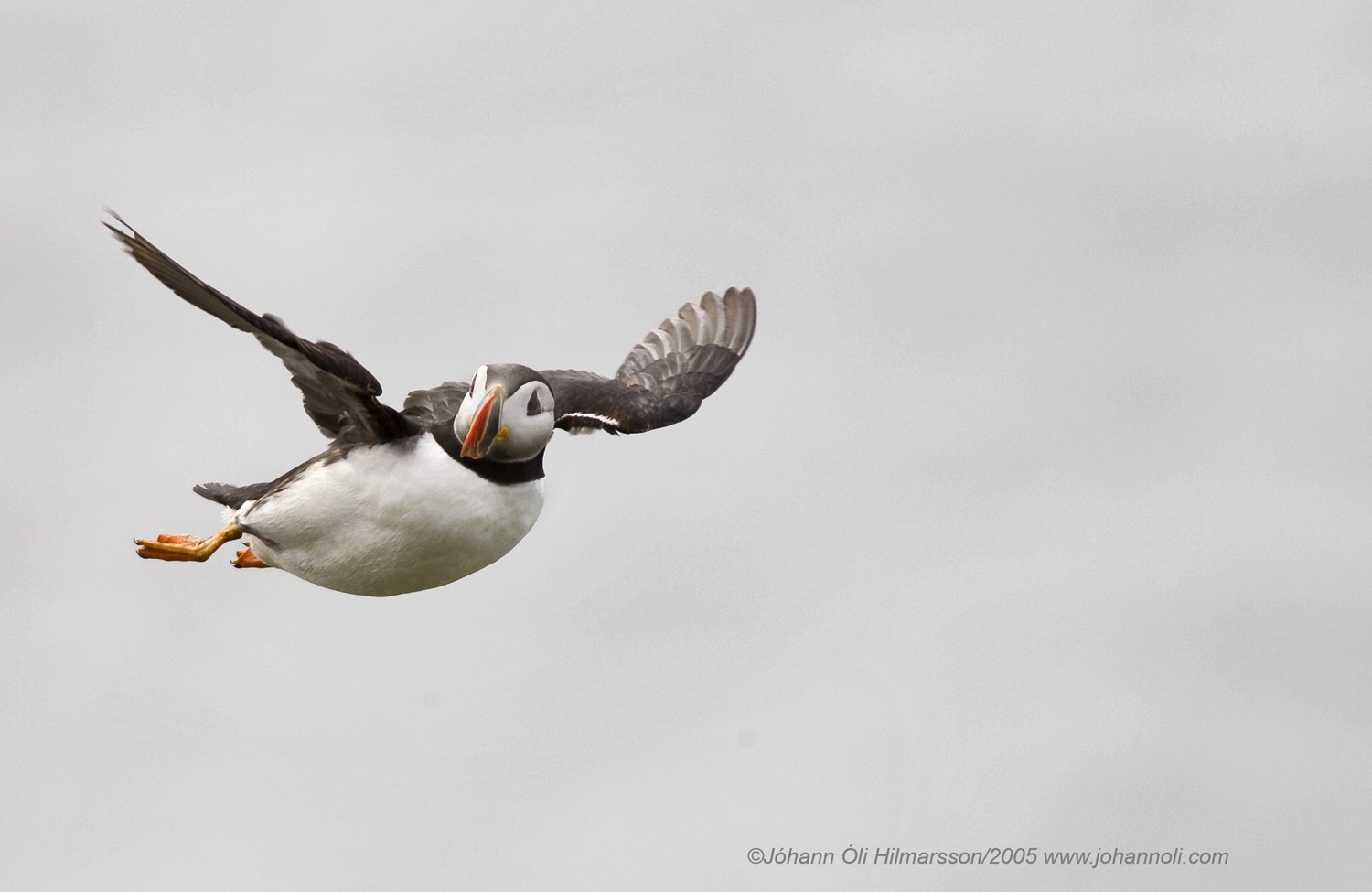
Ecology
The Puffins only lay one egg per year, parents feed their chick in the burrow for 42 days and then the “dress up” for their mate overwinter before meeting up again at the borrow next spring.
Only one egg
Most Icelandic Puffins start breeding between five and six years old, and mean life expectancy is about 12 years, but the maximum age record is 39 years. After mating puffins are mostly monogamous for life, returning to the same colony and same nesting burrow every year. Male and female puffins look similar, although males are slightly larger and heavier than the females.
Puffins lay just one egg each year. Puffins nest in large colonies, usually located on islands. At the colony the male uses their feet and bill to dig a burrow in the soil on average about 1.2 meter long, and normally curved. Both parents share incubation of the egg and, at a later stage, feeding the chick. The nest is near the end of the burrow with some grass and occasional feathers. The egg hatches after 42 days of incubation. The parents feed the chick until it rejects food when it is about ready to fledge, normally around 42 day old. When food shortages delay the growth of the chick this can prolong the time to up to 75 days (nearly double)
The beak
We’re all familiar with the puffin’s trademark multicoloured beak. However the Puffin’s bill also reflects UV light which the Puffins do see but humans don't, adding to the effect. However they only have the brightly coloured beak during the summer. In winter puffins shed their colourful outer bills, leaving smaller, pointier and dark bill behind. The colourful bill outer parts re-grow in time for the next breeding season. So the Puffins “dress up” for their mate.
Predators
Seabirds such as gulls and Arctic Skuas steal fish from Puffin parents as they carry it back to their burrows, while Great Skuas and Great Black-backed gulls directly prey on puffins, as locally do Gyrfalcons and White-tailed Eagles.
Puffins are vulnerable to invasive mammalian predators such as the American mink which will take puffin eggs and chicks. The mink was imported to Iceland in the 1930’s for fur farming, but soon escaped and colonized the whole country in four decades.
Eight months at sea
The Puffin has adapted to life at sea where it spends eight months of every year, only dwelling on land to breed.
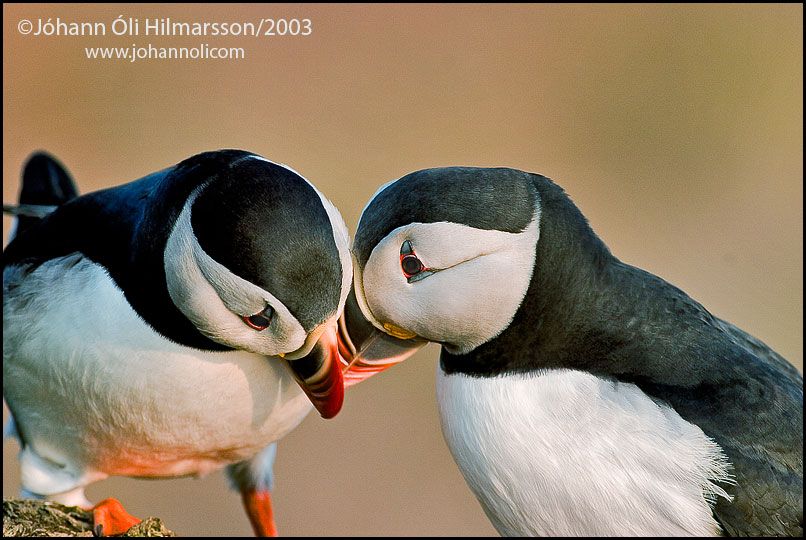
Life at sea
The Atlantic Puffin (Fratercula arctica) is a seabird, adapted to life within the marine environment. There are four different groups of seabirds : 1) Gulls, terns and auks, 2) Penguins, 3) Petrels (albatrosses, petrels, shearwaters) and 4) Pelicans (includes boobies, gannets, cormorants). The puffin is a member of the auk family.
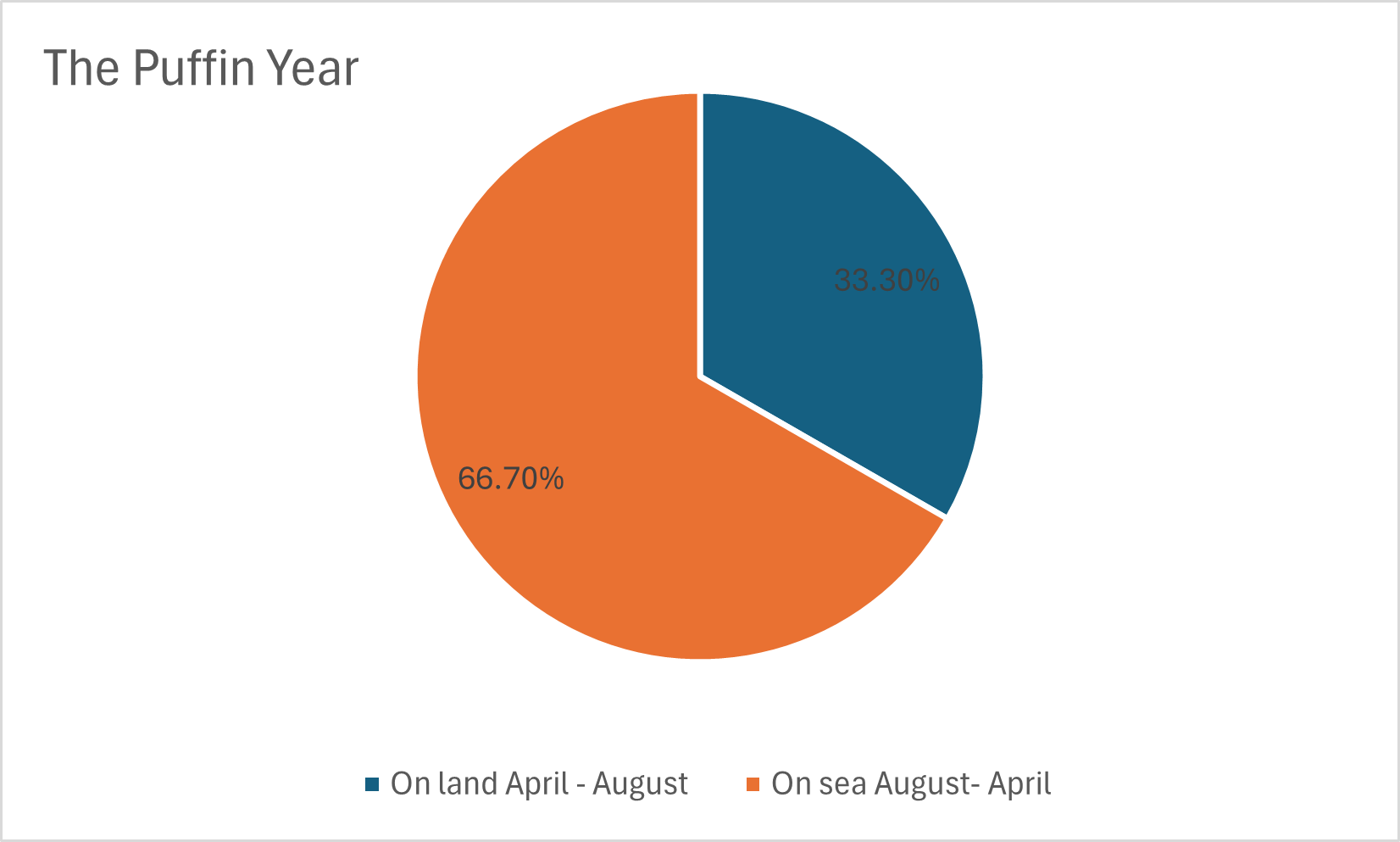
Puffins are only present on land during the breeding season. For the majority of the year they live out at sea in food rich areas of the Atlantic Ocean.
Adapted for life on the water
Puffins feed mostly on small fish and Zooplankton by diving for their prey, propelling themselves through the water using their wings. Their upper mandible has little spikes pointing backward, which when compressed by the tongue from below holds the prey in the bill, but still allows the puffin to catch more prey without losing the previously caught prey items. This allows them to carry multiple food items back to their chicks, with the average catch being approximately 10 fish per trip.
Puffins and all Auk wing anatomy is a compromise for flying in both air and sea. They have small wings for their body mass, and to produce enough lift to remain airborne they need to fly very fast or around 80 km/h. Underwater they use their wing half “subtracted” to minimize their size further and lessen drag. Their streamlined body and short tail enables them to move quickly through the water, and their webbed feet are placed at the back of the body to act as a rudder.Their feathers are dense and heavy and provide good insulation. Their skeleton is made for diving and protects their organs from underwater pressure. Unlike most birds who have air filled bones to make flight easier, the puffin has heavy bones serving as a ballast. Their lungs are large and their rib cage flexible allowing them to easily breathe in a lot of oxygen before diving. Puffins can dive to a depth of 60 meters and can stay underwater for up to one minute.
Our responsibility
The Atlantic Puffin is an endangered species in Iceland, in Europe and globally.
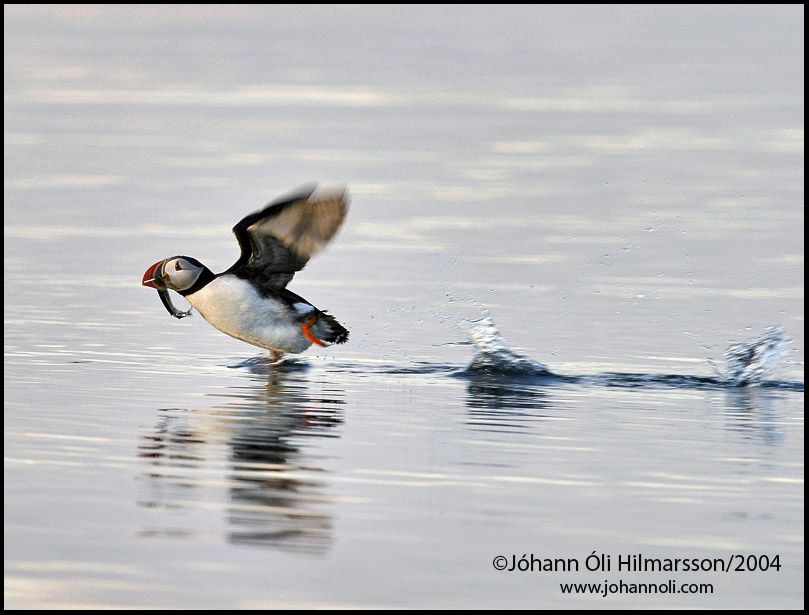
Climate change
Climate change is one of the key factors in the decline of the Atlantic Puffin, with rising sea temperatures meaning that parents must fly greater distances in order to get food for their young. Stormier weather in winter causes further problems.
Puffins are sadly in decline, and climate change appears to be the primary cause, both in Iceland and around the world. Rising sea temperatures are already disrupting food chains by altering the distribution and numbers of small fish that make up a puffin’s diet, such as sand eel, herring and capelin.
Adults must now fly further from the colony in order to find enough food to feed their young, which uses up a lot of energy, and when they do find food they are resorting to prey with a lower energy content than their usual prey. This causes many adults to skip breeding and reduces the survival rate of the chicks that are born. As a result puffin numbers are declining.
Another symptom of climate change is the increase in stormy conditions that puffins are encountering during their winter months at sea. These conditions make it more difficult for them to feed, and have resulted in increasing instances of seabird “wrecks” in which large numbers of dead birds wash ashore, presumably as a result of starvation.
In addition to climate change puffins are also facing a range of other man-made threats. Overfishing is contributing to the shortage of food availability for seabirds such as puffins; oil pollution affects the natural waterproofing of their feathers; and introduced species such as mink will feed on seabird eggs and young, all of which is contributing to puffin declines.
Fratercula Arctica Ecology
The Ecology of the Atlantic Puffin has them struggling to survive, only laying one egg a year and facing food shortage.
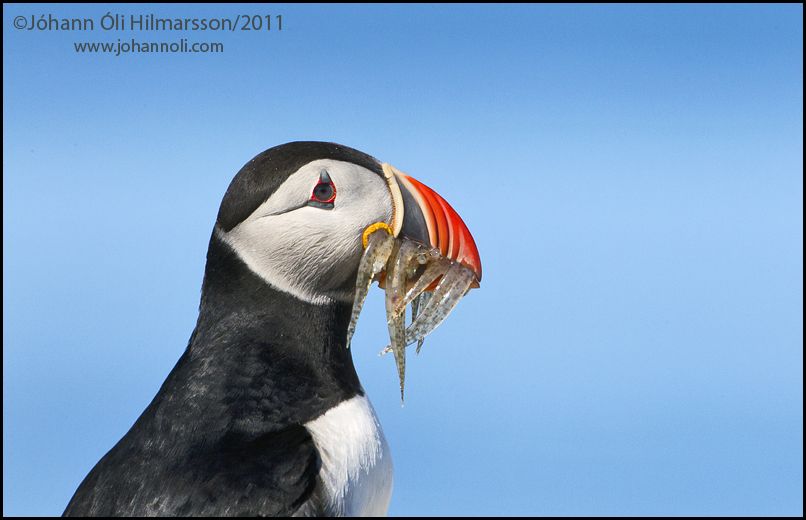
Endangered
The Atlantic puffin is listed on the Iceland Red List of Birds, the European Red List, and globally on the IUCN Red List. The species is in decline both in Iceland and across the world.

Puffins in Iceland
Approximately two million pairs of the Atlantic Puffin (Fratercula arctica) nest in Iceland - or about 40% of the global population - making it Iceland’s most common breeding bird. 18 puffin colonies or aggregations (Westmans and Breiðafjörður islands are counted as colony clusters) around Iceland contain over 10.000 pairs and are therefore recognised as being of international importance. Approximately 74% of the Icelandic puffin population breeds within designated “Important Bird and Biodiversity Areas (IBA)” which have been recognised as being internationally important for biodiversity conservation.
The Atlantic Puffin was listed as “Critically Endangered” on the Icelandic Red List of Birds in 2018, which is the latest inventory of threatened bird species in Iceland. This means that the species is considered to be facing an extremely high risk of extinction in Iceland, in contrast to the last ranking as “Least Concern” in the year 2000.
Seabird colonies around Iceland
European Red List of Birds
On the European Red List of Birds in 2017 the Atlantic Puffin is listed as LC, Least Concerned. On the European Red List of Birds in 2021 it is listed as EN, Endangered. This publication aims to help national governments to easily identify the species that are in urgent need of attention and protection.
Here you can open the European red list of Birds 2021
IUCN Red List
The Atlantic puffin was listed as VU, Vulnerable, on the IUCN Red List in 2018. This means that the species is likely to become endangered on a global scale unless circumstances improve. With over half of the world's Atlantic puffins nesting in Iceland we therefore have a responsibility to protect them.
Read more about the red listed puffin.
The hunting of an endangered species
The inclusion of a species on the red list does not confer automatic legal protection, such as a hunting ban. Hunting in Iceland of an endangered species like the puffins is legal.
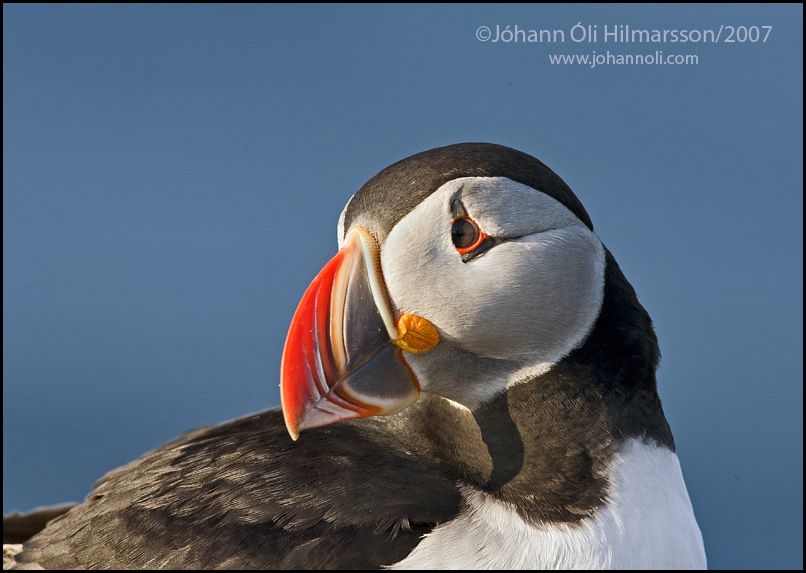
Hunting in Iceland
The hunting of the Atlantic Puffin is legal in Iceland, every year the hunting season is from 1. July until 15. August.
In general all wild birds in Iceland are protected by law (no. 64/1994). However 29 species are exempt from this general rule, and can be hunted during a hunting season of fixed duration.
Virtually all Puffin hunting in Iceland is by polenets during hunting season which is from 1. July until 15. August, but the landowners have the authority to either permit or forbid hunting on their land. Hunting has been a feature of Icelandic culture since settlement. The tradition lives on to the present day.
Between 1995 and 2017 the total hunting numbers have decreased by 91%. Hunting puffins is unsustainable without doubt. If the birds are not present in the area because of a decline in the population, a decline in the hunting numbers will align. Therefore Fuglavernd has advocated for a hunting ban or at least a sales ban since 2018.
Puffin on the menu
You might ask: “Why are the puffins being hunted?” Traditionally puffin has been eaten both smoked and raw. When puffin numbers were bountiful it was most commonly found on the menu in the Westman Islands where it was eaten as a delicacy starter dish when in season. However, puffins have not been hunted in the Westman Islands for several years now.
You will, however, find puffin on the menu of several restaurants offering fine dining in Reykjavík. The tourism boom in Iceland has provided demand and sadly, there is supply.
Climate change a factor in decline
Climate change, hunting and other man-made threats are all something these intriguing birds are facing.

Fuglavernd BirdLife Iceland
Fuglavernd BirdLife Iceland campaigns and advocates for the conservation of the Atlantic Puffin by several means.
Fuglavernd BirdLife Iceland is a Non-Government Organisation with 1300 members who pay an annual fee. That funding is the core of our operations. A large part of our work is done by volunteers but we also have two staff members in 1.5 jobs.
- Fuglavernd advocates for the conservation of bird species and habitats in policy and legislation.
- Fuglavernd delivers awareness raising campaigns, just like this one for the Atlantic Puffin.
- Fuglavernd educates others via publication of a magazine, website and social media.
Fuglavernd was recently given a legacy of Hafnarhólmi in Borgarfjörður eystri which is claimed to be the best site to visit the Puffins in Iceland.
Our vision is to establish a reserve in Hafnarhólmi, protecting that habitat for Puffins and other seabirds who breed there. We would like it to become sustainable as we are a Non-Profit, so that maintenance of the facilities are covered. Having a ranger in the area and thereby creating a local job in a small community is the ultimate goal.
What you can do to help
You can help, with your donation we can do more great work. Please help us protect a live puffin.
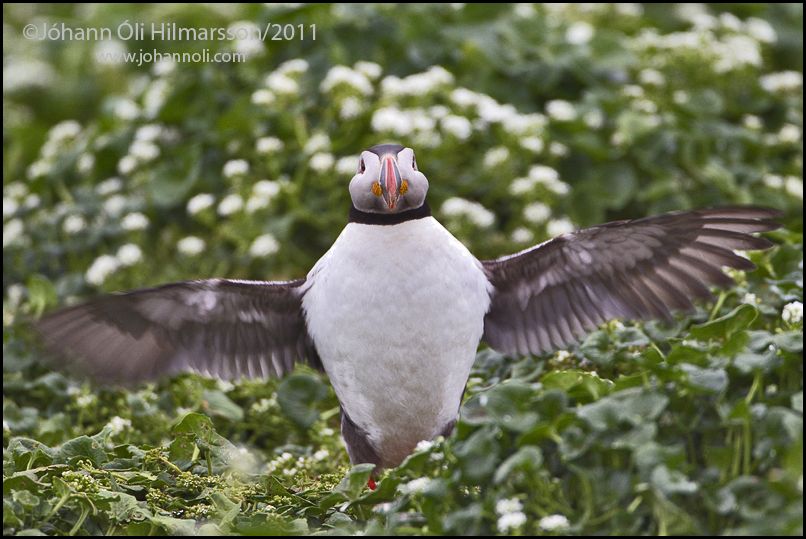
©Fuglavernd 2021 | Hverfisgötu 105 | 101 Reykjavík | kt.5007700159 | Opið:_mán-fim kl. 9-13 | +354 562 0477| fuglavernd@fuglavernd.is
